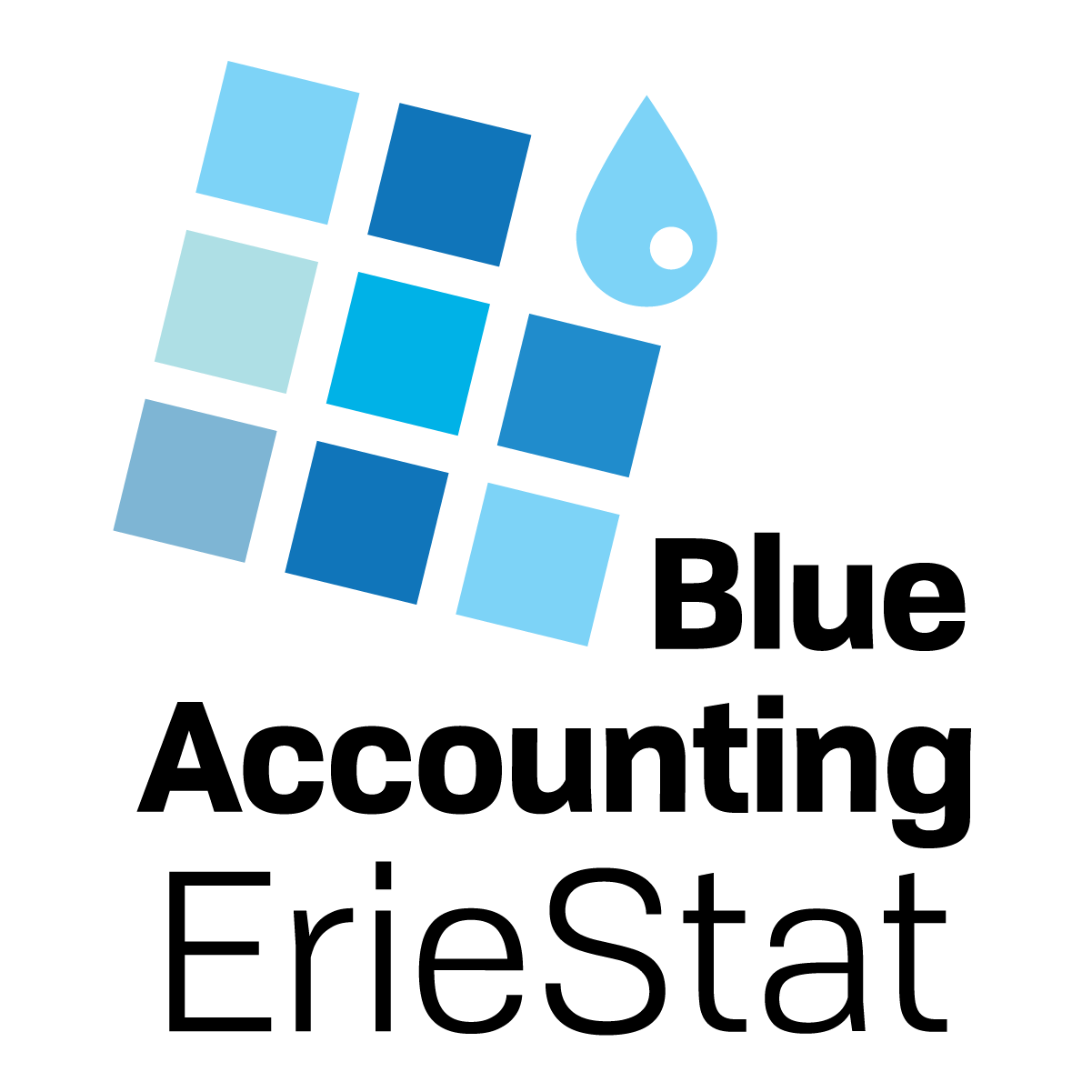Library
ErieStat: Project Archive
This project has ended. Archived project materials are available below. For information about ongoing work in this area, please visit the Blue Accounting website: www.blueaccounting.org/issue/eriestat/

Excess phosphorus entering Lake Erie contributes to the formation of harmful algal blooms and dead zones, which can be dangerous for fish, wildlife and people. Under the Great Lakes Water Quality Agreement, the U.S. and Canada agreed to work together to reduce to amount of phosphorus entering the western and central basins of Lake Erie by 40 percent (from 2008 levels). ErieStat is part of the Great Lakes Commission’s groundbreaking Blue Accounting program and brings together water quality experts to discuss and agree on methods to measure progress toward the 40% reduction goal.
Learn More about ErieStat
The nutrient annex of the Great Lakes Water Quality Agreement (Annex 4) set the goal of a 40% reduction in the amount of total and dissolved reactive phosphorus entering the western and central basins of Lake Erie. ErieStat is a web-based platform, developed by a binational workgroup of water quality professionals and designed to track progress toward the binational phosphorus reduction goals. ErieStat also shares the strategies and investments intended to achieve the shared goal of phosphorus reduction in western and central Lake Erie.
Tracking progress toward a healthier Lake Erie
Lake Erie has a significant social and economic impact on the surrounding region. Currently, harmful algal blooms (HABs) and seasonal hypoxia, which are thought to be the result of excessive phosphorus (P) loading, threaten the water quality and biodiversity of the lake. Recognizing the substantial threat HABs and hypoxia present to the surrounding region, governors and premieres agreed to reduce P loading by 40% (from 2008 loads) by 2025 in the 2015 Collaborative agreement. In the same year, the Great Lakes Commission’s own Lake Erie Nutrient Targets report established similar goals and a set of 10 steps to achieve the targets. Both of those efforts gained further support when the governments of Canada and the United States formally adopted a 40% reduction goal in February 2016 through Annex 4 of the 2012 Great Lakes Water Quality Agreement between the two nations.
ErieStat is a web-based platform for tracking progress toward the goal of a 40% reduction in phosphorus loads to the western and central basins of Lake Erie. ErieStat provides valuable services to the states of Indiana, Michigan, Ohio, Pennsylvania, and New York and the province of Ontario as these governments work to implement policies and programs to achieve the binational phosphorus reduction goal.
Reducing P loading is expected to substantially decrease the intensity and frequency of HABs while also reducing the areal extent of the hypoxic zone within the central basin, therefore improving water quality for surrounding communities that depend on Lake Erie for safe drinking water and the Lake’s ecosystem as a whole.
Reducing Phosphorus into Lake Erie
Excess phosphorus entering Lake Erie contributes to the formation of harmful algal blooms and dead zones, and can be dangerous for fish, wildlife and people.
In June 2015, the Governors of Michigan and Ohio and Premier of Ontario signed a Collaborative Agreement to work together toward a 40% reduction in the amount of total and dissolved reactive phosphorus entering Lake Erie’s Western Basin by the year 2025, with an interim goal of a 20% reduction by 2020. In the same year, the Great Lakes Commission’s own Lake Erie Nutrient Targets report established similar goals and a set of 10 steps to achieve the targets. Both of those efforts gained further support when the governments of Canada and the United States formally adopted a 40% reduction goal for phosphorus in the western and central basins in February 2016 through Annex 4 of the 2012 Great Lakes Water Quality Agreement between the two nations. The Commission is working closely with Annex 4 in developing ErieStat.
Project Documents
Project Fact Sheet (2018)
Project Documents (Password Protected)
Password protected documents are archived for project team use, and are not available for public download.
Project Team and Collaborators
ErieStat was led by a team from the Great Lakes Commission in partnership with The Nature Conservancy. Guidance for ErieStat came from our Steering Committee and Content Advisory Group, which include members from state, provincial, and federal government; academic research institutions; nonprofit organizations; and other experts in the region. The Blue Accounting project received funding support from the Charles Stewart Mott Foundation, the Fred A. and Barbara M. Erb Family Foundation, the Joyce Foundation, and the Herbert H. and Grace A. Dow Foundation.
For More Information
Nicole Zacharda
Program Manager, Great Lakes Commission
734-971-9135
[email protected]
